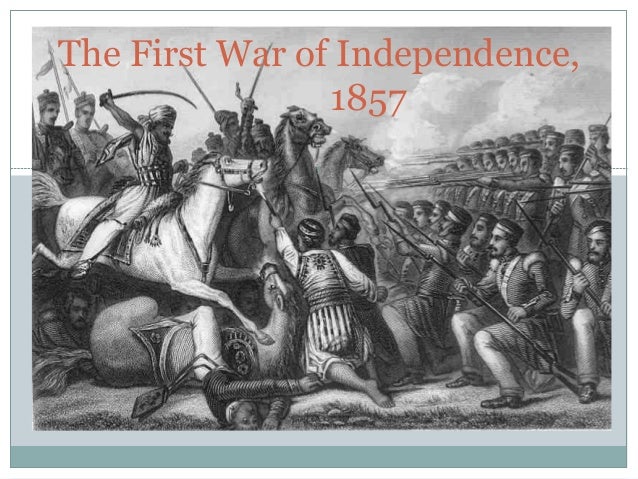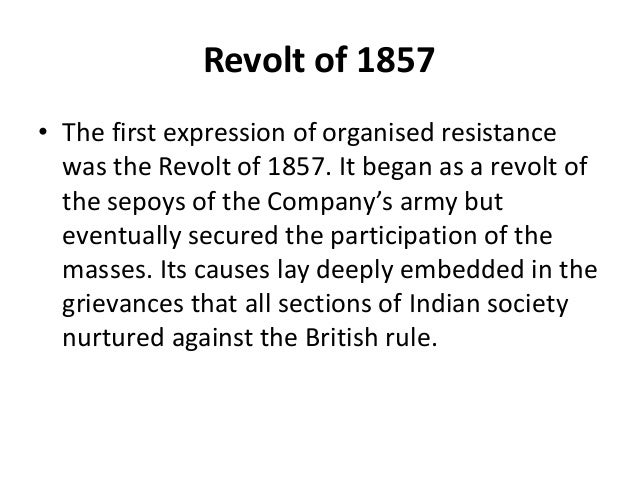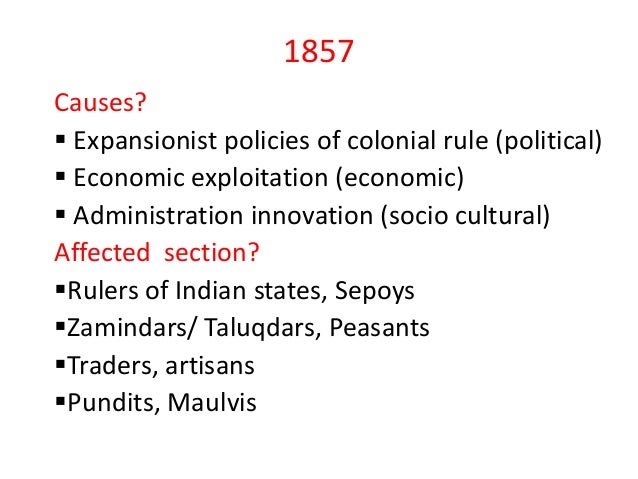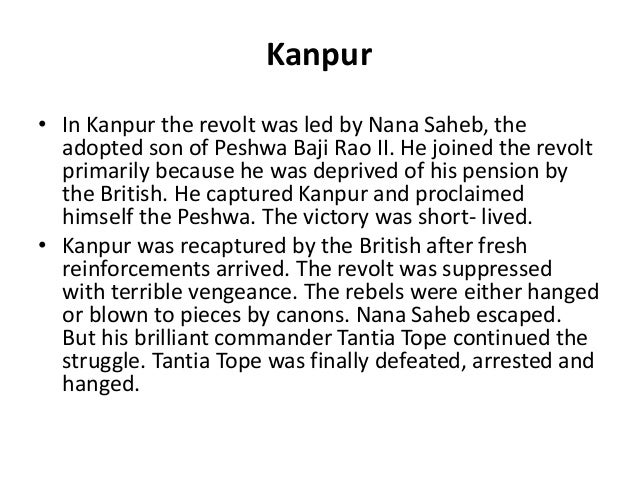

 The revolt of 1857
was the first and the most severe outburst of anger and discontent
accumulated in the hearts of Indian people ever since the advent of
British following the Battles of Plassey and Buxar. Though the apologists of imperialism dubbed it as a 'Sepoy Mutiny', the Indian historians have praised it as the 'First War of Indian Independence'.
In the words of Nehru: "It was much more than a military mutiny and it
rapidly spread and assumed the character of a popular rebellion and The
colonial regime hurt the religious sentiments of both the Hindus and
Muslims in India and activities of Christian missionaries created
suspicion. Politically, the arrogance and dictatorial attitude of Lord Dalhousie and
his predecessors shocked the traditional rulers of the country. His
policy of annexation sent a wave of resentment over the country. The annexation of Awadh for misgovernment was the most dangerous step which put the government in bad faith.
The conditions of Indian sepoys, employed in the British army, were
heinous and unbearable. Slightest pretext was enough to play havoc, and
this was supplied by the introduction of greased cartridges. The greased
cartridges alone would not have, however, sufficed to provoke such an
explosion, there was a mix of political, social, economic as well as
religious factors.
The revolt of 1857
was the first and the most severe outburst of anger and discontent
accumulated in the hearts of Indian people ever since the advent of
British following the Battles of Plassey and Buxar. Though the apologists of imperialism dubbed it as a 'Sepoy Mutiny', the Indian historians have praised it as the 'First War of Indian Independence'.
In the words of Nehru: "It was much more than a military mutiny and it
rapidly spread and assumed the character of a popular rebellion and The
colonial regime hurt the religious sentiments of both the Hindus and
Muslims in India and activities of Christian missionaries created
suspicion. Politically, the arrogance and dictatorial attitude of Lord Dalhousie and
his predecessors shocked the traditional rulers of the country. His
policy of annexation sent a wave of resentment over the country. The annexation of Awadh for misgovernment was the most dangerous step which put the government in bad faith.
The conditions of Indian sepoys, employed in the British army, were
heinous and unbearable. Slightest pretext was enough to play havoc, and
this was supplied by the introduction of greased cartridges. The greased
cartridges alone would not have, however, sufficed to provoke such an
explosion, there was a mix of political, social, economic as well as
religious factors.
The important incidents were:
- The siege of Delhi and its recovery by the British force in late September.
- The military operations around Kanpur and Lucknow
- The central Indian campaign in 1858 of Tantia Tope and the Rani of Jhansi.
ADMINISTRATIVE AND ECONOMIC CAUSES
- Annexation of Indian states deprived the Indian aristocracy of the power and position which they were enjoying earlier. Under the British rule all High Posts were reserved for the Europeans.
- New land revenue settlements made by the East India Company in the newly-annexed states drove poverty in the ranks or aristocracy and the peasants were the worst affected class due to the heavy assessments and ruthless manner of collection.
- The East India Company destroyed Indian Handicraft and Industry by using its power and made Indian industry an appendage of a foreign exploitative system.
- Further, the Indian Handicraft and Industry was adversely affected due to the loss of its consumers in the country in the form of princes and aristocrats
SOCIAL AND RELIGIOUS CAUSES
- Like every conqueror, English rulers of India were rude and arrogant towards the subjects and described the Hindus as barbarians with hardly any trait of culture and civilization, while the Muslims were dubbed as bigots, cruel and faithless.
- There was discrimination on the basis of religion in the administration and Judiciary between the Indian and Europeans.
- Indians were called as 'nigger' and 'Suar'.
- In the Religions Disabilities Act of 1850, provision was made that change of religion did not debar a son from inheriting the property of his father. This was seen by the Indians as an act of conversion to Christianity.
- Further, strange rumours were current in India that Lord Canning is specially charged to convert Indians into Christianity.
- Activities of Christian padris and Bethune towards woman education made Indian's feel that through education, the British were going to conquer their civilization.
TO BE CONTINUED...


Post a Comment
Post a Comment